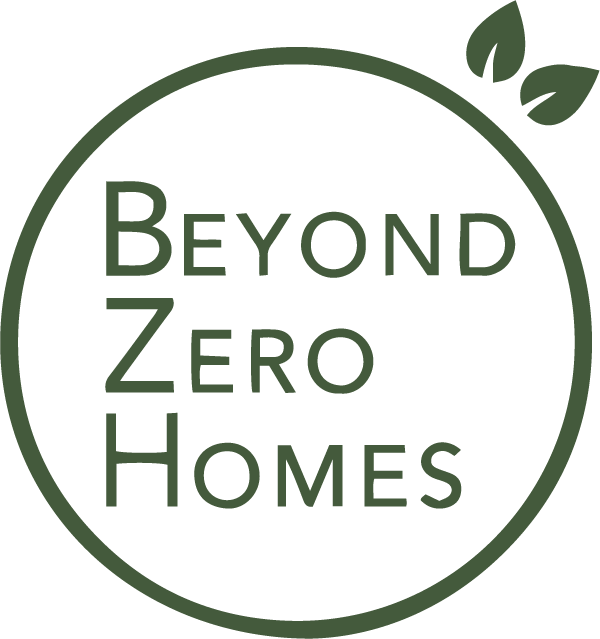The numbers are in, and we couldn’t be happier. The whole life embodied carbon assessment shows that Beyond Zero Homes’ COP26 House beats the RIBA 2030 Challenge target by a substantial 22%. Here Daniel Doran from Circular Ecology presents the results.
From its inception, one of the key aims of the COP 26 House project was to minimise embodied carbon emissions, to build a truly zero carbon house across its life cycle.
Most embodied carbon emissions come from the supply chain of construction products – the extraction of raw materials, processing, transporting and manufacturing. Further embodied carbon emissions come from transporting products to site, installation, repair and replacement during use, and their end-of-life deconstruction and disposal.
To minimise embodied carbon, the architect of the COP26 House, Peter Smith from Roderick James Architects, focused on efficient use of products and choosing those with lower embodied carbon. Wherever possible, Peter selected timber-based products – for their (generally) lower embodied carbon, but also their aesthetic, comfort and health characteristics.
Exceeding RIBA 2030 Challenge targets
The success of Peter’s design approach can be demonstrated by comparing the embodied carbon of the COP26 House with the RIBA’s recently updated 2030 Challenge targets. A house the same size as the COP26 House – built according to RIBA’s ‘business as usual’ benchmark – would cause around 78,000 kg of embodied carbon emissions. To achieve the RIBA’s 2025 or 2030 targets, emissions would need to reduce to around 50,000 kg and 41,000 kg of embodied carbon, respectively.
In fact, the COP26 House, thanks to the careful consideration of embodied carbon during its design, achieves approximately 32,000 kg of embodied carbon. This represents a 59% reduction compared with business as usual, and an impressive 22% reduction compared with the most stringent 2030 target.
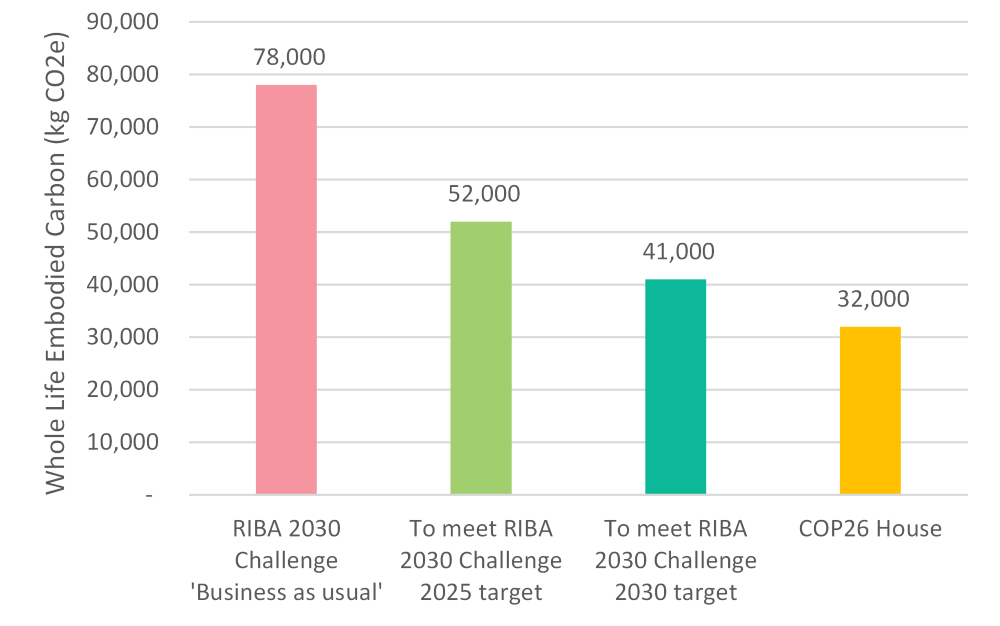
Embodied carbon emissions occur throughout the life cycle of a house, and the RIBA 2030 Challenge targets and results in figure 1 take all significant life cycle emissions of the COP26 House into account over the standard sixty-year life cycle ‘study period’. (Note: it’s expected the design of the COP26 House will ensure its actual life should be much longer).
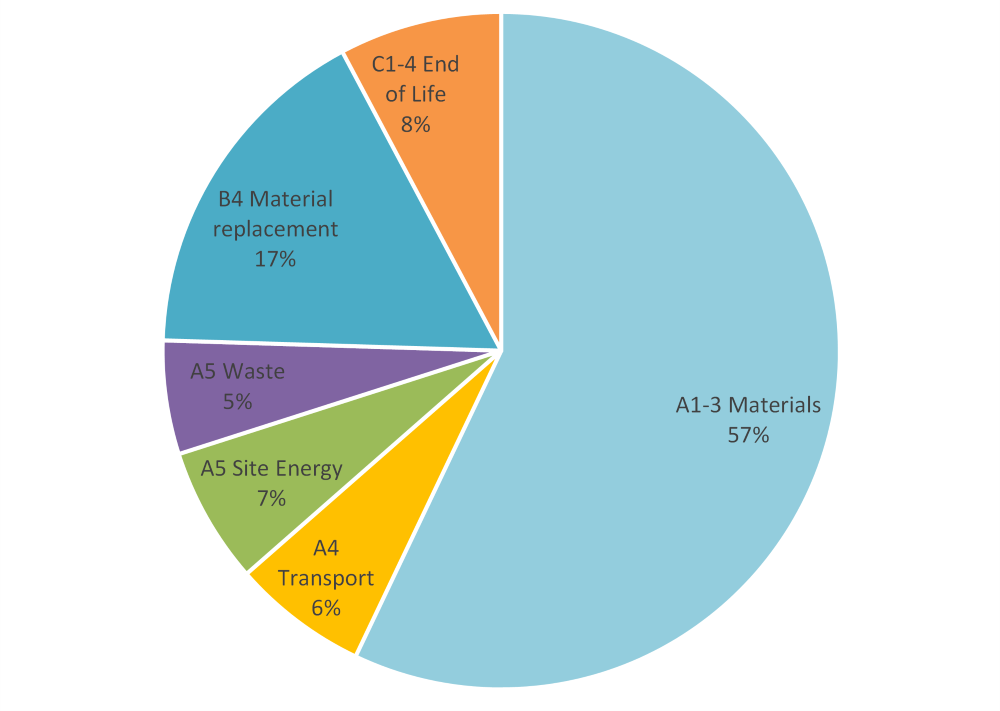
Maximising Carbon Storage
Timber-based products generally have lower embodied carbon, but they have another important advantage: storing carbon from the atmosphere.
A growing tree absorbs carbon dioxide from the atmosphere and, as a result, stores carbon in its timber. When timber is harvested, this ‘biogenic carbon’ remains stored (known as ‘sequestered’) until the timber is broken down through incineration or decomposition.
Peter’s approach of maximising the use of timber-based products means a very significant amount of biogenic carbon has been stored. In fact, as shown in figure 3, the amount of carbon stored in the COP26 House far exceeds its upfront (up to practical completion) embodied carbon emissions.
At practical completion, the COP26 House accounts for around 24,000 kg of embodied carbon but is, at the same time, storing more than double that at around 53,000 kg of biogenic carbon.
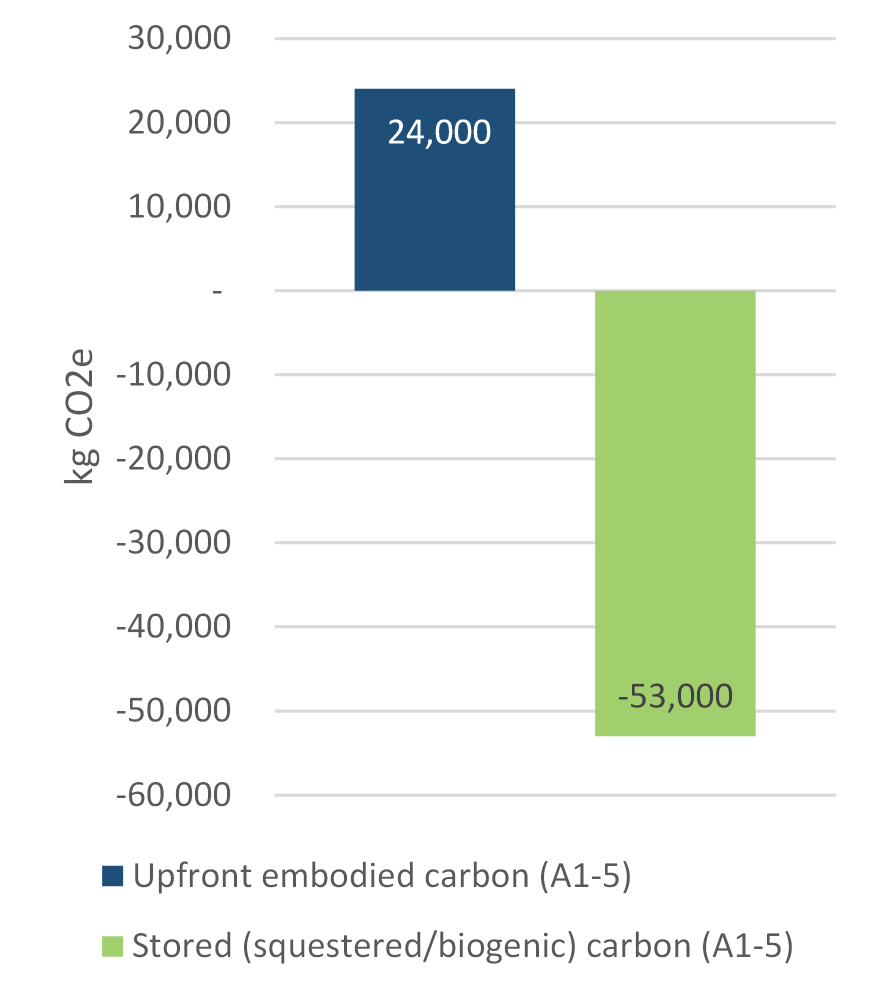
This has been possible through clever use of timber-based products throughout the house. Many parts of the house that may traditionally use a different type of product have instead used timber – even the roof covering on the COP26 House is timber!
Figure 4 shows the percentage contribution each building element type makes to the embodied carbon total (positive values in dark blue) and stored biogenic carbon (negative values in green) total.
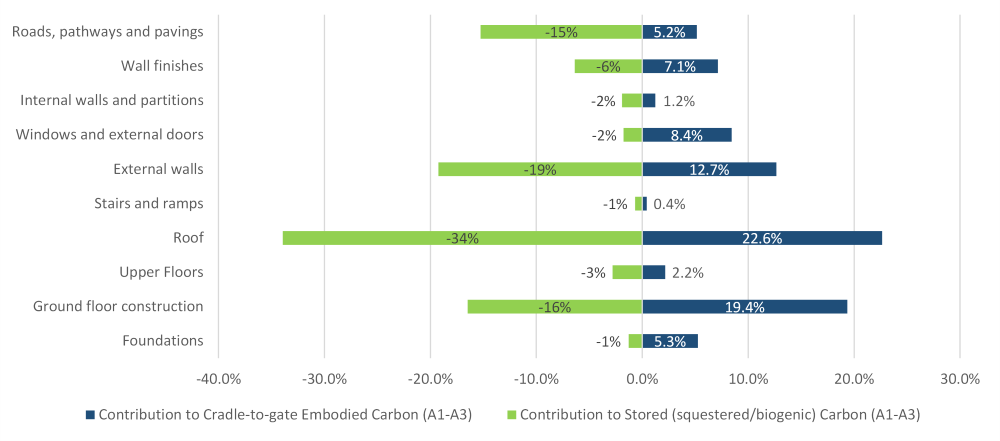
(NOTE: stored carbon values may not sum exactly to 100% due to rounding. Embodied carbon values do not sum to 100% because only categories that include stored carbon are shown. )
For any building that stores biogenic carbon, this carbon is eventually destined to return to the atmosphere when the products are disposed of through incineration or decomposition. However, to maximise the benefit of stored carbon, end of life disposal should be delayed for as long as possible by designing for resilience and simple future re-use. This is how the COP26 House has been designed, and so its life should far exceed the standard sixty-year study period. In addition, care has been taken to use standard components that are easily dismantled so they can be simply re-used in a future building.
An exemplar
Achieving a whole life embodied carbon result that is well below the most stringent RIBA 2030 Challenge target, as well as storing more than twice the carbon that is emitted at the point of practical completion, means the COP26 House can be considered an exemplar in low embodied carbon design.
Follow us on LinkedIn and Twitter for more updates and photos!
